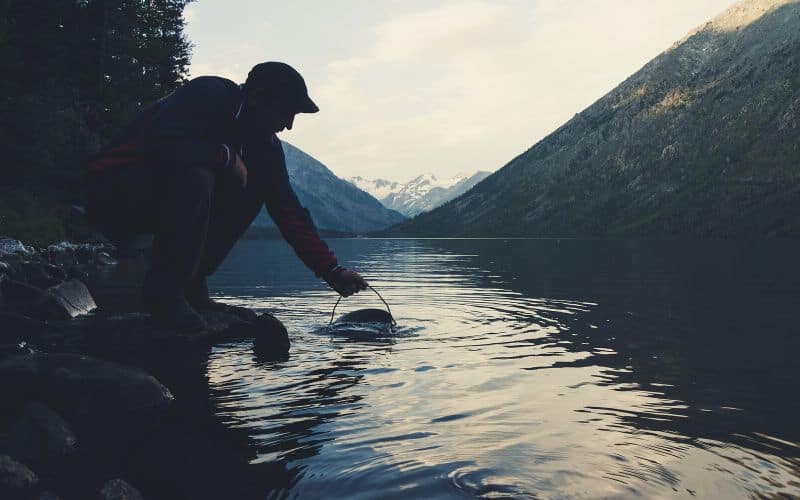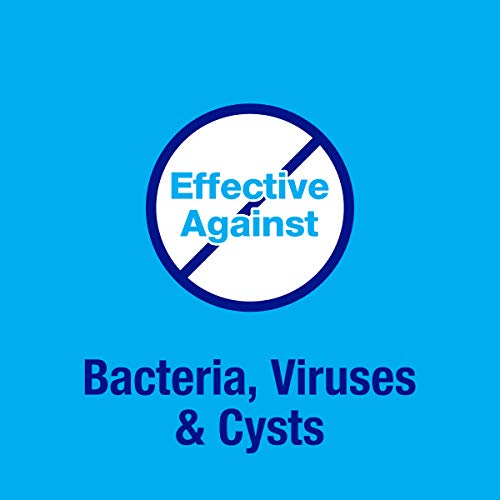If you plan on hiking into the backcountry or are preparing to spend a few nights off the grid, you need to bring plenty of drinking water.
But what if you run out of the wet stuff during your trip? If you don’t have enough drinking water you need to find a natural water source nearby, like a river or stream, to stay hydrated. But is it safe to drink river water?
In this guide, we’ll cover everything you need to know to drink water from natural sources while hiking, backpacking, or camping, including where to find it and how to treat it.
Can You Drink River Water? All You Need to Know
If you’re spending an extended amount of time in the wilderness and can’t carry enough water for your trip, there are a few things you need to do. You’ll need to find nearby water sources, know how to identify clean water, and have the right gear to treat it and make your H2O safe to drink.
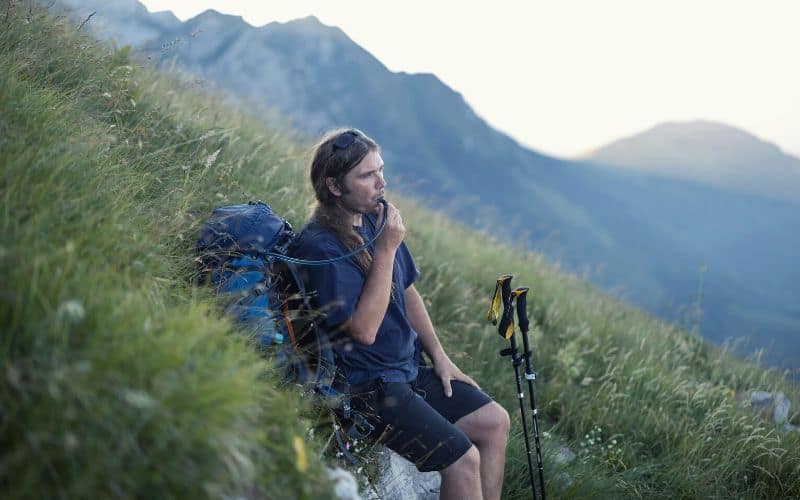
General Rules for Drinking Stream Water, River Water, and Water from Other Wild Sources
Staying hydrated while spending time in nature is an essential part of outdoor safety.
So how much H2O does a healthy adult need? According to the Mayo Clinic, an adequate daily intake is about 3.7 liters for men and 2.7 liters for women. Keep in mind that you need to drink extra water when you are hiking or backpacking, especially in hot or humid weather or at higher elevations.
The best way to ensure you have safe, potable water is to bring enough for your entire trip and along with a bit extra.
If you know you won’t be able to carry more than sufficient fluids for your stay outdoors, however, you need to plan your trip route or camping location around being close to a water source.
Depending on the area, you may have access to freshwater sources, like streams, rivers, springs, or lakes. Finding natural water sources is easy in mountainous areas with snow-melt creeks and streams, and much harder in dry areas like the desert.
Even though it may look crystal clear and you may be tempted to drink directly from the source, you should never drink untreated water. Hikers, backpackers, and campers who drink untreated water can become very ill.
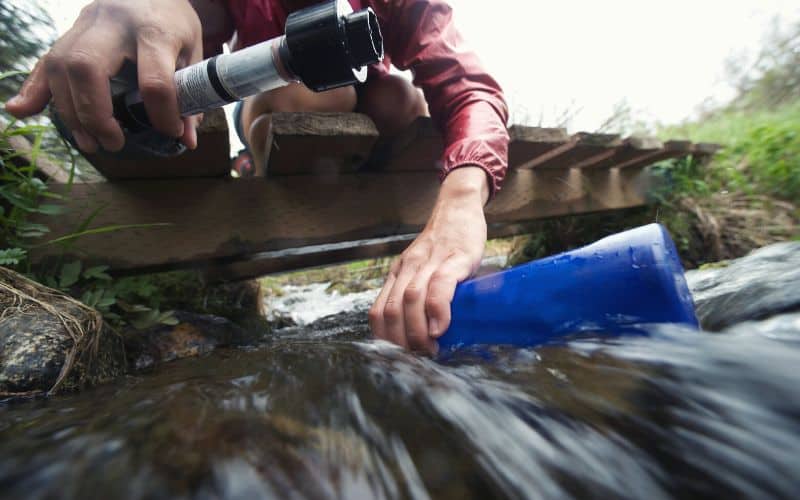
Potential Pathogens, Viruses, Protozoa, and Bacteria
Drinking untreated water from rivers, lakes, and other natural sources can lead to gastrointestinal illness and waterborne disease. These can be extremely serious, especially for children, seniors, and people with immunodeficiencies.
The quality and safety of natural water sources in the wilderness are unknown. There is always the potential for contamination from a variety of hazards to our health. These include heavy metals, parasites, harmful chemicals (in agricultural areas), and harmful microorganisms like viruses, protozoa, and bacteria.
Viruses
Viruses in natural water sources like hepatitis A, norovirus, and enterovirus often come from human and animal fecal waste runoff. The potential health effects of drinking water with viruses are gastrointestinal illness, hepatitis, and meningitis. Common treatment methods with high effectiveness in removing viruses in H2O are boiling and iodine or chlorine dioxide tablets.
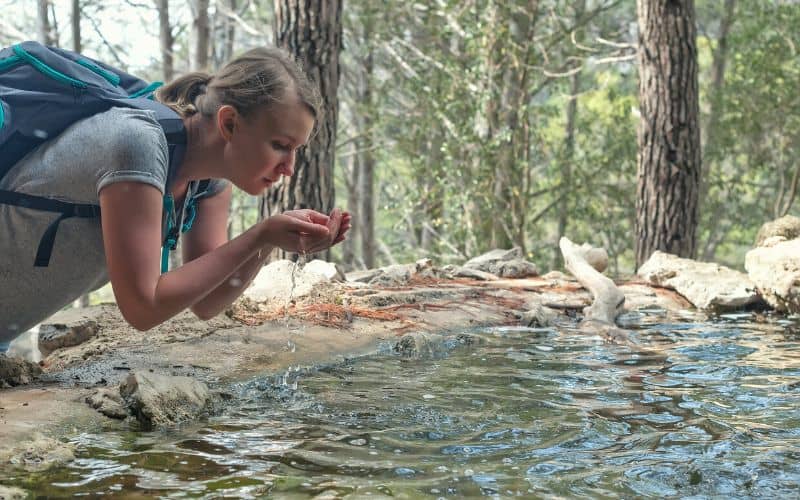
Protozoa
Protozoa, like giardia and cryptosporidium, can live in water contaminated with human and animal waste matter. Protozoa can cause gastrointestinal illnesses like diarrhea, vomiting, and cramps.
The best methods for removing these are boiling and filtration. A combination of filtration and disinfection offers the highest effectiveness in removing and killing protozoa. Purification with iodine or chlorine alone will not always kill cryptosporidium.
Bacteria
Bacteria, like Salmonella, E. coli, and Campylobacter, are usually caused by contamination from human and animal fecal waste. Ingesting these types of bacteria can lead to gastrointestinal illness including diarrhea, vomiting, cramps, and severe dehydration.
The best methods for removing bacteria are boiling, iodine tablets, and/or filtration using advanced filters.
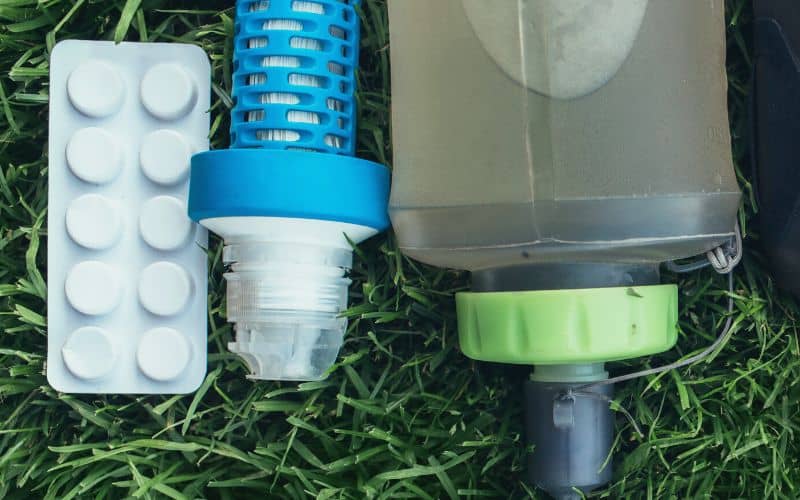
How to Identify Unsafe Natural Water
Always be overly cautious when selecting a natural water source for drinking. There are a handful of guidelines you should follow when looking for a safe source to replenish your supplies of H2O.
- Although clear and pristine-looking water does not guarantee it’s safe, drinkable water, the cleaner and less cloudy it looks, the better.
- Opt for water that is transparent, odor-free, and has little to no debris or dirt floating around.
- Aim for running water from streams or rivers instead of puddles or greenish ponds of stagnant or standing water.
- Do not fill up on H2O from sources downstream from campgrounds, old mines, farms, or agricultural areas.
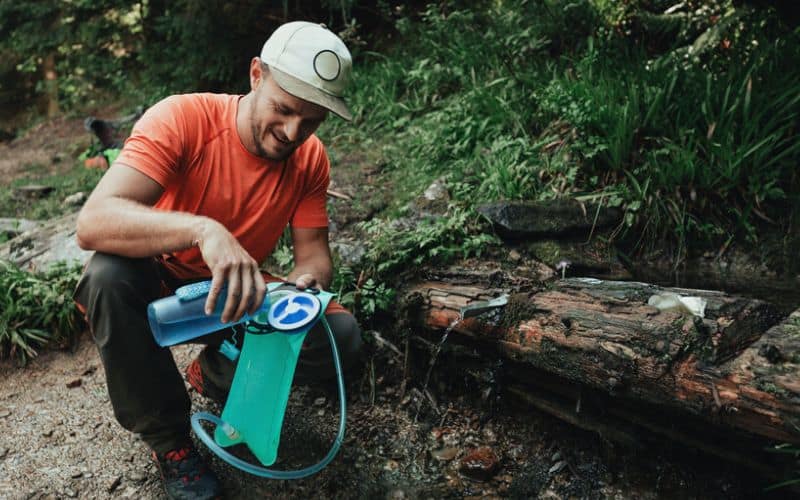
How to Treat Natural Water
You should always treat H2O taken from natural sources before drinking it or using it for cooking to avoid getting sick. Depending on the water quality, you may need to use one or more of the following treatment methods.
Boiling
The most basic way to purify water is to boil it before drinking.
To do this, you will need a fire or camping stove and a pot with a lid (covering your H2O will make it boil quicker).
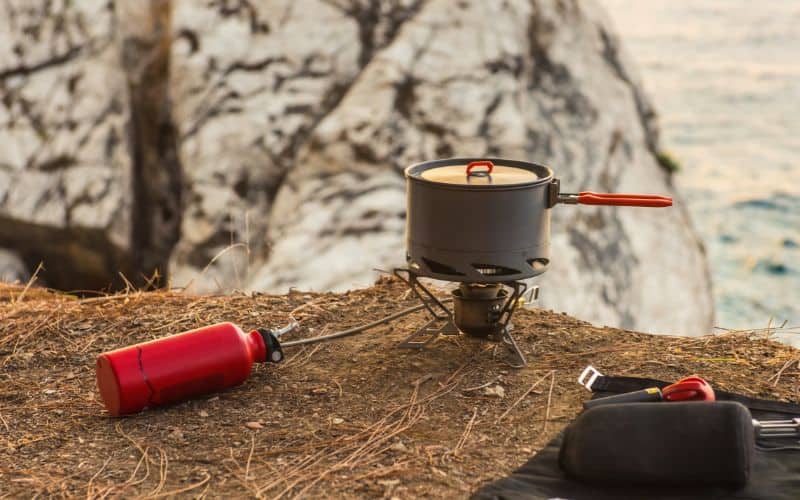
Place the water in the pot and bring it to a rolling boil for at least one minute. The higher the altitude, the longer you should boil water. If you are at an elevation of 6,500 feet or more, you need to boil it for at least three minutes. For more on this, check out our guide on boiling water at altitude.
If the water is muddy or cloudy, let it sit until the silt settles, and then pour the clear water on top into the boiling pot for drinking.
Boiling kills off most microorganisms, including bacteria, viruses, and protozoa. However, boiling water will not make it safe if it’s contaminated with toxic chemicals like arsenic or lead.
If you don’t have access to a heating method, you can use a combination of chlorine dioxide or iodine tablets and filtration devices to effectively reduce the pathogens in backcountry water sources.
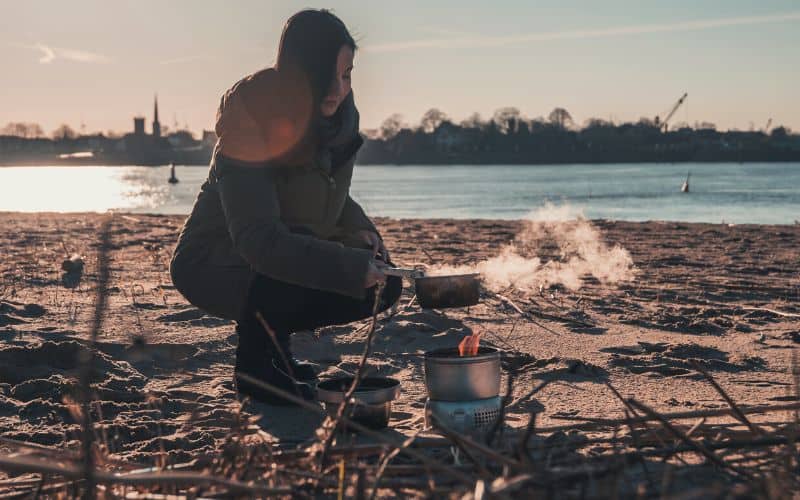
Purification Tablets
Purification tablets offer a lightweight, simple way of treating H2O from a stream or river when boiling isn’t possible. Types of chemical tablets and purifiers include iodine, chlorine dioxide, potassium permanganate, and halazone tablets.
Disinfection does reduce the number of bacteria and viruses in natural H2O, but chlorine and iodine are not always good at killing protozoa. Its effectiveness can vary greatly depending on several variables, like cloudiness and temperature.
To use this method, follow the directions on the package carefully to thoroughly disinfect water before drinking. It typically involves dropping a chemical tablet into a water bottle and letting it sit for a minimum amount of time before drinking.
It’s important to note that iodine tablets should not be used by pregnant women or those with thyroid issues or iodine sensitivity. They are also not recommended for continuous use.
Filtration
Treating H2O using a filtration device is an effective way to remove most microorganisms and sediment. The amount of contaminants removed depends on the filter’s pore size, how contaminated the water is, and the contaminant’s particle size and charge.
Commonly used water filters include filtration straws, push filters, and gravity filters. Filtration straws are small, lightweight, and ideal for an emergency situation or as a backup when hiking. You can use it exactly like you would a straw to pull H2O directly from the source and it purifies as you drink.
Backpackers and campers should stick to push and gravity filters to get their filtered water. These devices can treat larger amounts of H2O so you can store it in a hydration pack or container for later use.
Note that only filters with chemical disinfectants are effective against some viruses. The pathogen reduction rate improves when filtration and disinfection methods are combined.
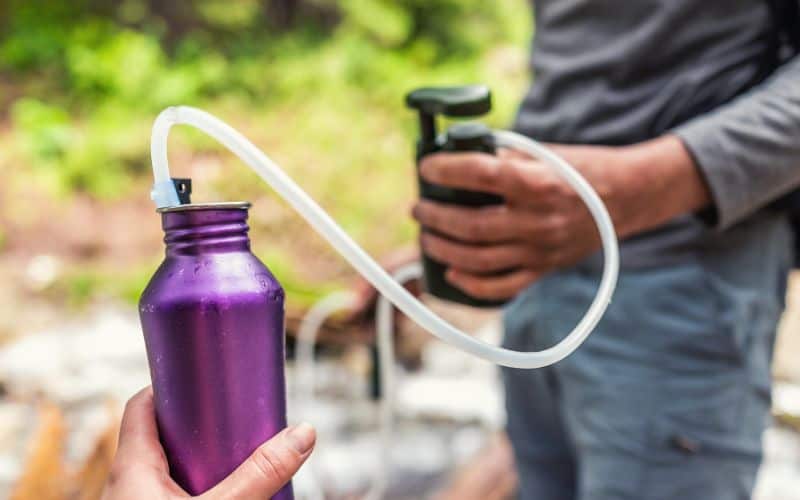
UV Light
Ultraviolet light may help reduce pathogens in tap water, but it’s not as effective as other methods on this list when attempting to purify untreated water from natural sources. This method requires prefiltering the H2O before applying the UV light for the correct contact time to be effective.
If you have a handheld UV sterilizer, you may want to pre-filter your H2O to reduce pathogens.
Final Thoughts
Whether it’s from a lake, stream, or river, finding safe drinking water outdoors is simple once you have the correct information and gear.
Just remember not to drink untreated water from any source. Look for clean natural sources and be sure to treat your H2O before drinking it or using it for cooking.
What is your preferred way to filter river water for drinking? Let us know in the comments below! If you enjoyed this article, feel free to share it with your friends.
